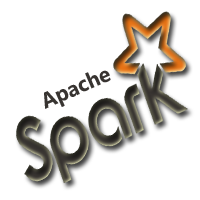Apache Spark Tutorial
Apache Spark tutorial provides basic and advanced concepts of Spark. Our Spark tutorial is designed for beginners and professionals. Spark is a unified analytics engine for large-scale data processing including built-in modules for SQL, streaming, machine learning and graph processing. Our Spark tutorial includes all topics of Apache Spark with Spark introduction, Spark Installation, Spark Architecture, Spark Components, RDD, Spark real time examples and so on. What is Spark?Apache Spark is an open-source cluster computing framework. Its primary purpose is to handle the real-time generated data. Spark was built on the top of the Hadoop MapReduce. It was optimized to run in memory whereas alternative approaches like Hadoop's MapReduce writes data to and from computer hard drives. So, Spark process the data much quicker than other alternatives. History of Apache SparkThe Spark was initiated by Matei Zaharia at UC Berkeley's AMPLab in 2009. It was open sourced in 2010 under a BSD license. In 2013, the project was acquired by Apache Software Foundation. In 2014, the Spark emerged as a Top-Level Apache Project. Features of Apache Spark
Usage of Spark
PrerequisiteBefore learning Spark, you must have a basic knowledge of Hadoop. AudienceOur Spark tutorial is designed to help beginners and professionals. ProblemsWe assure you that you will not find any problem with this Spark tutorial. However, if there is any mistake, please post the problem in the contact form.
Next TopicApache Spark Installation
|
 For Videos Join Our Youtube Channel: Join Now
For Videos Join Our Youtube Channel: Join Now
Feedback
- Send your Feedback to [email protected]
Help Others, Please Share










